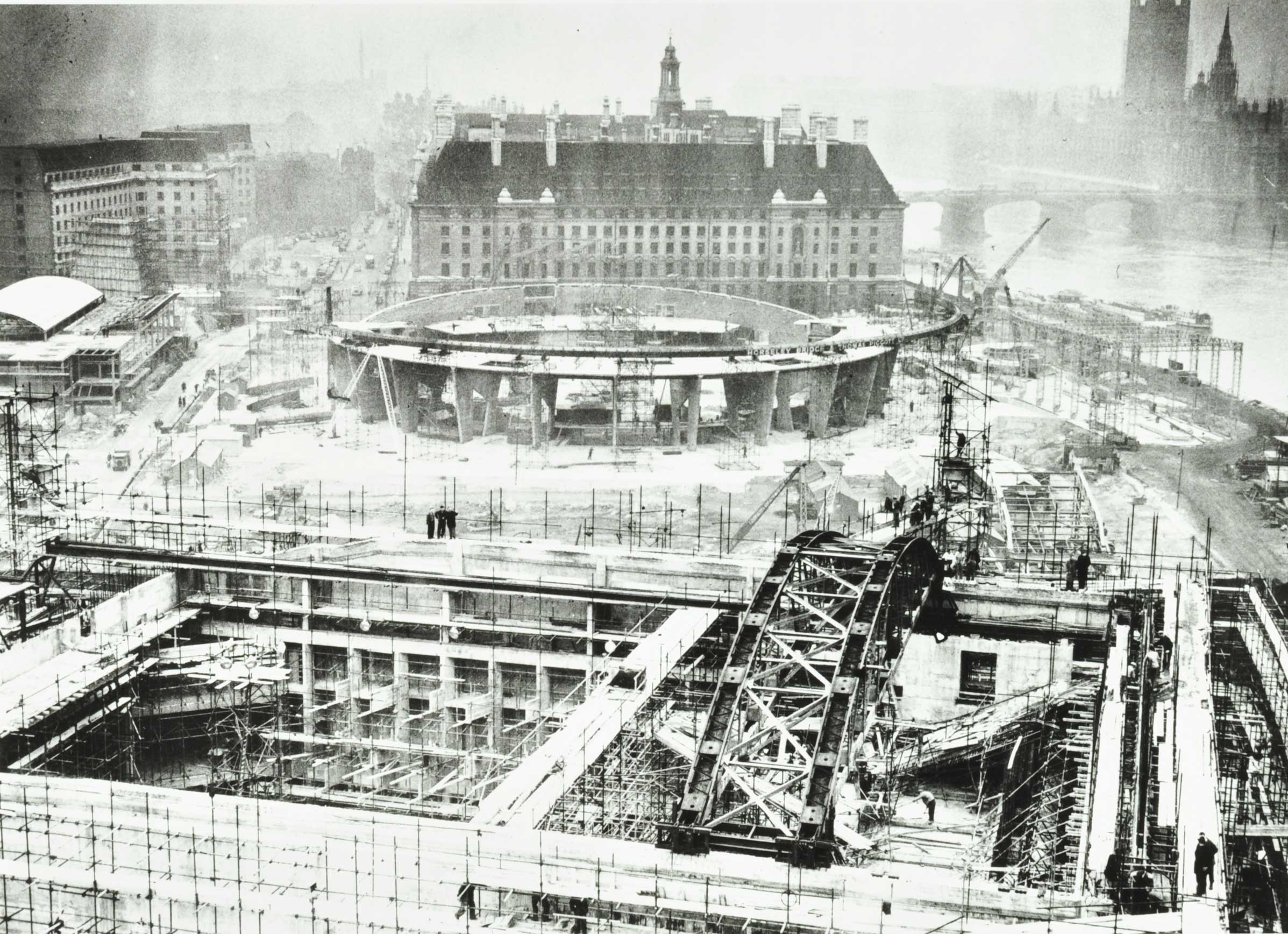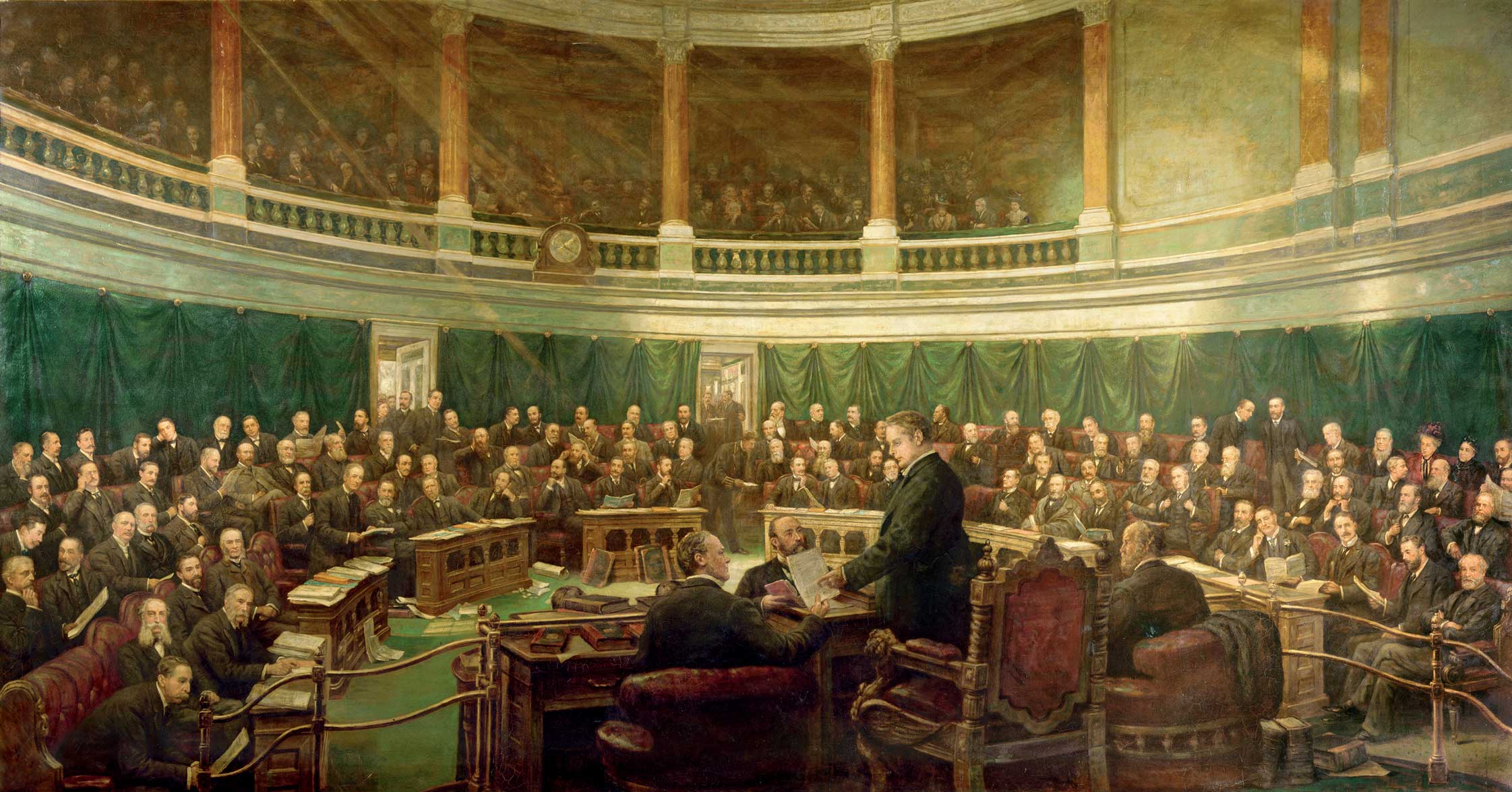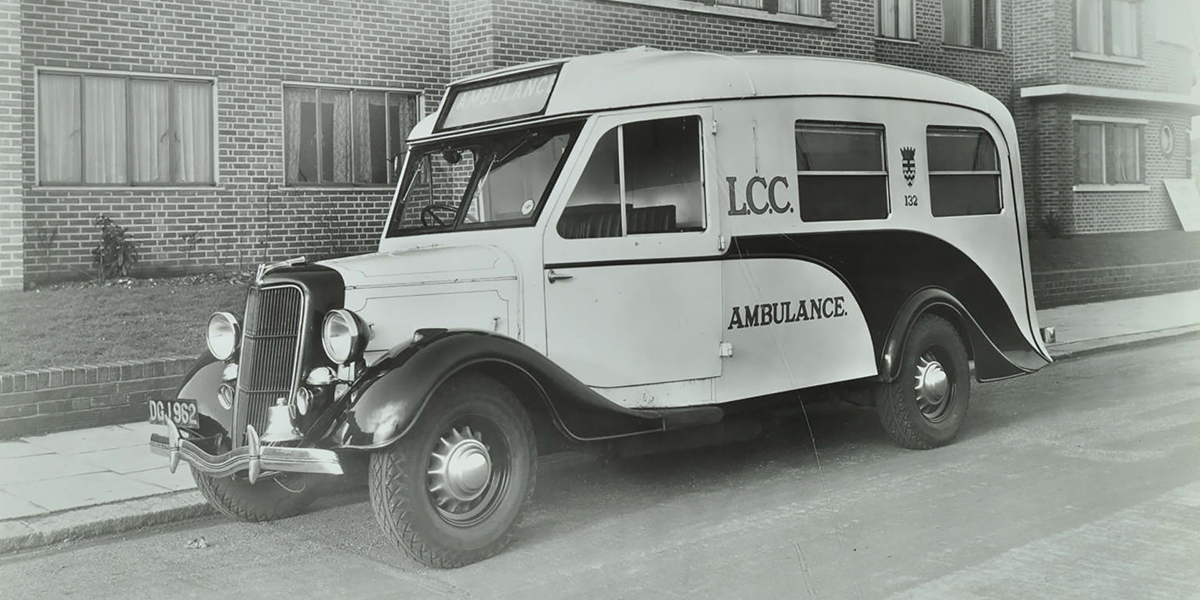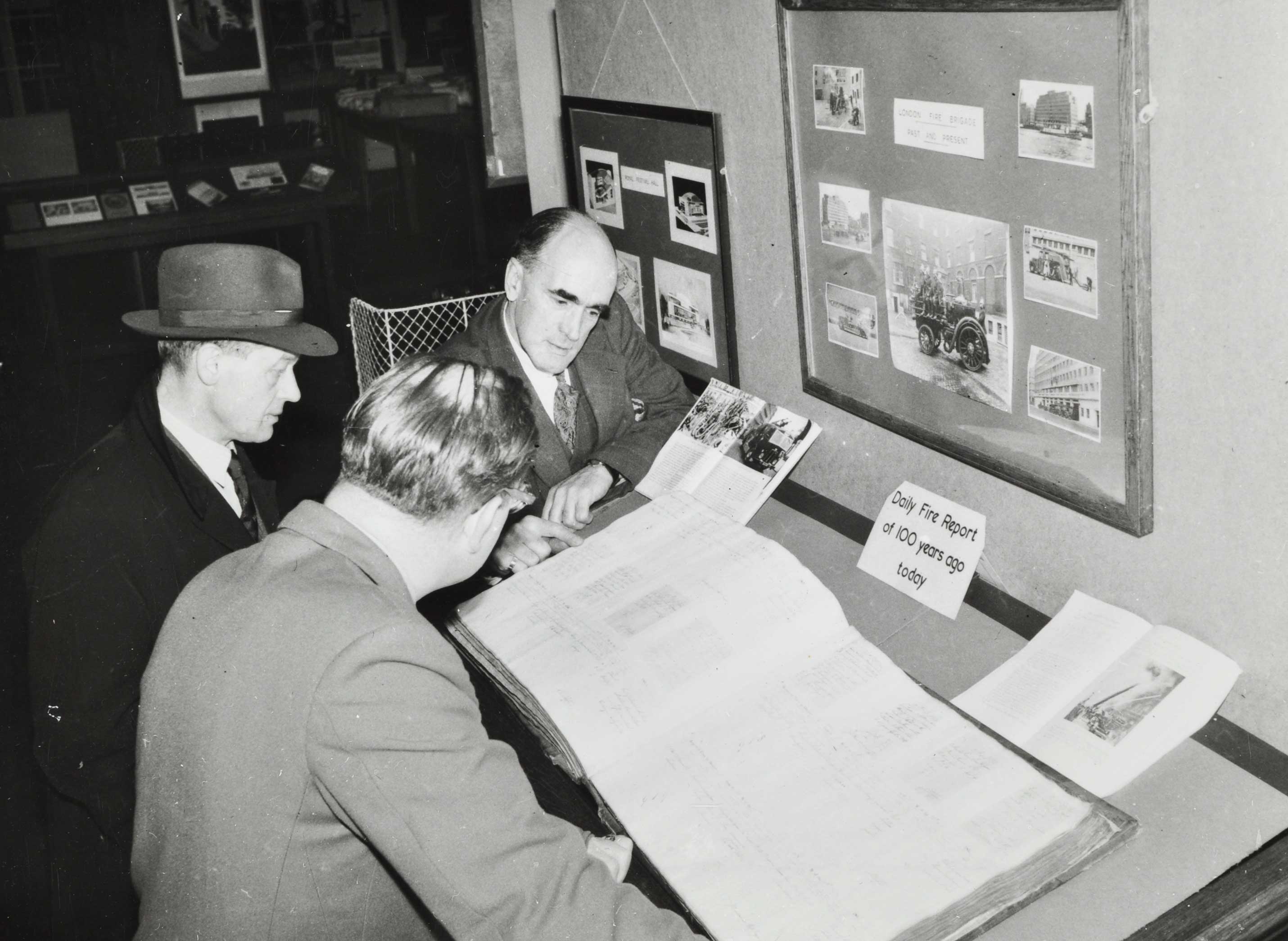Introduction to the records of the London County Council
Using the records of the London County Council at London Metropolitan Archives
The archives of the London County Council (LCC) are a core collection at LMA, and their breadth and fullness provide a wealth of materials for researchers interested in the development of London from 1889-1965. However, the records can be complex and as a result can be intimidating for users.
This article attempts to give an overview of the development and functions of the LCC to enable researchers to find ways into the collection. It also suggests potential research strategies and offers a bibliography for further research.
What was the LCC?
The LCC was the principal local authority in Greater London between 1889 and 1965, with a jurisdiction of 117 square miles overseeing a population of 1.3 million inhabitants. It had a wide range of responsibilities and powers which shaped the physical city and the lives of Londoners who lived in it. Based at purpose-built premises at County Hall on London’s South Bank for most of its history, at its height it employed 76,000 people and left a profound legacy.

Why was the LCC formed?
The LCC was one of the directly elected county councils established by the Local Government Act of 1888 which sought to solve the problems caused by the rapid growth of towns and cities in the nineteenth century. Before the formation of the LCC there was a patchwork of authorities responsible for London’s government which included 78 parish vestries, the Metropolitan Commissioners of Sewers, county justices and innumerable private bodies. The only area in London with a centralised government was the City of London, where the Corporation of London had wide powers established by royal charters. The complexity of this arrangement made it difficult for large scale infrastructure improvements to take place in London, thwarting attempts to create new water and sewerage provision, to clear slums and to develop new highways for example.
The move towards centralised services for London began in 1855 when Parliament abolished many of the local bodies, made vestries the central local authorities and set up the Metropolitan Board of Works (MBW, whose archives are also held at LMA) to oversee streets and sewers, paving and lighting, amongst other functions. While the MBW received much criticism, its successes in developing London’s infrastructure, including laying 82 miles of main sewers, made clear the need for centralised local government for London’s metropolis.
The new administrative County of London came into being in 1888 with the creation of the LCC. This took parts of the area previously known as the Metropolis out of the counties of Middlesex, Kent and Surrey. The City of London Corporation retained its independent role in the City of London.

The LCC's functions and responsibilities
The LCC’s responsibilities changed during its history and an accessible account of the development of its services can be found in W. Eric Jackson’s 'Achievement: A Short History of the LCC' (LMA library reference 18.0 1965). Broadly speaking, the number of services the council provided increased over time, but you should be aware that it lost responsibilities as well; for example, hospitals formerly managed by the Boards of Guardians came into the care of the LCC in 1930 and were transferred to the National Health Service after 1948.
Core functions of the LCC included the following but were not limited to:
Housing: slum clearance; social housing construction and management, including community facilities, play areas etc; specialism in architecture and building technology; post-war redevelopment; out-county estates; housing for elderly people
Education: (became the responsibility of the LCC on the abolition of the School Board for London in 1904): management of nursery, primary, secondary education and comprehensive schools; school curriculum; sport and play; school holidays and visits; education for children with special educational needs; school meals and health; construction and redevelopment of school buildings; further and adult education; youth services; teacher training
Public Health: hospitals; maternity and child welfare including domiciliary midwifery; health visiting and home help; mental health services; vaccination; care of people with tuberculosis; health centres; social work with families; Family Welfare Units; ambulance service
Welfare Services: (on the abolition of the poor law in 1948): development of homes for elderly people; services for disabled people; homes for single mothers (mother and baby units); welfare of blind people; reception centres for homeless people and services for homeless families; lodging houses and hostels; out-relief; reception of refugees
Children’s Service: children in care; provision of receiving homes & nurseries; boarding out and fostering; children’s homes; special residential schools; juvenile offenders and remand homes; approved schools; adoption; training of social workers
Town Planning: building standards and planning; County of London Plan 1943 and Development Plan of 1955; post war clearance and reconstruction; South Bank redevelopment; relocation of industry; street renaming and numbering
Roads, traffic, transport: improving the flow of traffic; Blackwall Tunnel, Woolwich Ferry; Kingsway, the Hammersmith Flyover, Elephant and Castle; London Traffic Survey; bridges; motorways; tramways; passenger ferries
Parks and Open Spaces: maintenance and regulation of parks and open spaces including former burial grounds; new parks, such as Hammersmith; allotments; entertainments in parks (Finsbury Park, Battersea Park, Kenwood); sports facilities; play areas; preservation of London squares; London’s Green Belt; specialism in horticulture and arboriculture; swimming pools.
Sewerage and Drainage: maintenance and improvement of main drainage service; sewage outfall works; sludge vessels; pollution of the River Thames; flood prevention; Thames tributaries; bridges, ferries, tunnels
Public Control: licensing of vehicles; driving licences; entertainment licences; cinemas and censorship; oversight of employment agencies and massage establishments; safe keeping of petroleum and dangerous substances; weights and measures; performing animals; coroners
Heritage and Culture: protection of historic buildings; National Theatre; Royal Festival Hall; Crystal Palace; Survey of London; Members’ library and County Record Office; patronage and grants; open air entertainments; sports facilities; Horniman Museum and Geffrye Museum (now the Museum of the Home)
London Fire Brigade: emergency response; fire prevention; salvage service
The structure of the LCC
The LCC (like other county councils) ran on political lines. Members of the Council were directly elected in local government elections which took place every three years. The main business of the Council comprised the reporting of Committees on the work they had done and actions for the Council to approve. Items were often agreed without discussion, as issues had already been discussed at the committee stage. Members were also able to ask questions about the Council’s work in Council meetings and debates sometimes occurred for important issues (though these were not common). Decisions made by the Council were recorded in the Council’s minutes. The minutes do not contain the text of speeches made by members.
Elected members of the Council were divided up into committees (and sub-committees) which had specific responsibilities (e.g. housing, public health etc). The political make-up of members on each committee was proportional to the strength of their parties on the Council. The chairman of each committee was a member of the majority party and was the spokesman in full Council for his or her committee’s decisions. The archives contain the minutes and presented papers of the various committees, so you can see how committees reached their own decisions – the committee level often includes more discussion of issues and considerably more detail than the Council minutes.
Council officials (i.e. paid staff rather than elected members) were grouped into departments, such as housing, finance, parks etc, each under a departmental chief. Certain departments link directly to their committees, such as the education department and education committee. However, other departments, such as the solicitor’s department and the architect’s department were responsible for work affecting multiple committees across the whole Council. Every committee could call for assistance from any department. The department officials were given the responsibility for the day-to-day administration of the Council, but the committees and the Council settled the lines of policy.
Politics in the LCC
It has been argued that the political element of the LCC’s history has generally been underplayed by official accounts (this argument is made in 'Politics and the People of London: The London County Council 1889-1965' edited by Andrew Saint). In the simplest terms, Liberals and Radicals worked together as Progressives to control the Council from 1889-1907. From 1908-1931 the Council was dominated by the Municipal Reform Party, a group of moderates allied to the Conservative Party. From 1934 Labour dominated the Council until the council’s abolition in 1965.

The End of the LCC
After the Second World War, a Royal Commission decided that reform of the LCC was necessary to better cope with the demands caused by the enlarged Welfare State. At the same time, London’s boroughs were seeking greater powers. The Royal Commission recommended that London borough councils should become the primary units of local government and that they should be enlarged in size. It was advised that responsibilities for housing, health and welfare, children’s services and environmental health should be brought under the control of the borough councils, with a broader pan-London council offering umbrella services.
However, the Commission did not shy away from praising the LCC’s achievements, stating “nobody studying London Government can fail to be deeply impressed with the achievements of the LCC. It has given the Administrative County of London a strong and able form of government which makes its standing very high among the municipal governments of the world.”. The LCC was replaced by the Greater London Council (GLC) and the Inner London Education Authority (ILEA) on 1 April 1965 (LMA holds the archives of the GLC and ILEA).
Using the records of the LCC - research strategies
Council minutes
For most subjects, the Council minutes are the best way in to the Council’s records. The minutes, available on the open shelves in the Information Area at LMA, are extensively indexed by year. They are not available online. You will need to think about how your topic might be presented in the minutes. For example, if you are searching for information regarding the maintenance of a park, you can search for the name of the park in the index and look up the Council decisions relating to it. You may need to browse through several years’ worth of volumes.
Identifying housing schemes and schools may require you to use secondary sources to establish the early name of the development, as the names we know housing schemes by now were often formally given only once the building was completed. You may also need to check maps to identify locations to make sure you are looking at the right development. Secondary sources that might be useful are listed at the end of this guide.
If you are interested in the Council’s policies relating to a particular subject or topic you may need to take a broader approach, searching the minutes for a discrete date range, or identifying decisions that the Council made in relation to specific subjects.
The Council minutes are most useful for identifying which committee was responsible for a particular decision, allowing you to work back through the records. You should make a note of when decisions were made so that you can find the relevant papers in the committee minutes.
Committee minutes and presented papers
Having identified (from the Council minutes) which committee was responsible for the decision, you now need to find the relevant committee minutes. They are not available online and need to be ordered from the stores here at LMA. The easiest way to do this is to use the hard copy catalogue binders to the LCC catalogue in LMA’s Information Area to identify the reference code, which you can then use to order the volume using our online catalogue. Binder numbers 30-36 list the Committees alphabetically, giving you the reference code for the volumes of minutes at specific dates. Alternatively, you can search the online catalogue for the name of the committee – you are looking for results from the LCC/MIN series.
Do be aware that the names of committees change over time – this is indicated in the catalogue. When your volume comes up from the store, you will find that committee minutes are not normally indexed so you should usually look for the committee meeting immediately before the Council decision of interest.
As well as the committee minutes, for each meeting the committee would be presented with a set of papers. These 'presented papers' usually comprise reports and notes but can include plans or drawings, depending on the committee. They also need to be ordered from the stores. The LCC catalogue binders mentioned above list the presented papers by date with the committee minutes. Make a note of the reference number so that you can order the volumes of interest. Like the committee minutes, these will be arranged by date. These also can be located on the online catalogue using the name of the committee – again, they will be in the LCC/MIN series.
Departmental records
If you are interested in the activities of a particular department, you can browse their records using the online catalogue, or by using the LCC catalogue binders. Departmental records are most useful for policy level documents, for administrative material and for evidence of how policies were enacted by LCC officials. Please be aware that departments did not have a standardised way of keeping records and some departments have fuller records than others.

Things to bear in mind
- You can search our online catalogue using your subject as a keyword. Results from the LCC collection will have a reference code which starts 'LCC/'.
- Please be aware that archive catalogues – particularly for large bodies like the LCC – don’t usually include much detail about the information contained in specific files. A search for a specific redevelopment project, for example, may not bring up all the relevant sources – you are likely to have to search the minutes and committee papers as described above. Don’t assume that a negative result means there are no relevant records!
- When powers and responsibilities moved from the LCC to other bodies, records may have gone with them. This is particularly true for some records of London’s social housing built by the LCC – the original plans were usually transferred to the London boroughs when they took over responsibility from the LCC.
- When the LCC was abolished some records were subsumed into the GLC archives, for example, Building Act case files assessed by the LCC’s architect’s department can be found in the GLC’s collection, as the responsibility passed straight to the GLC, along with the records.
- Some records are not available for public consultation. Data protection legislation applies to records which contain information about individuals who might still be alive. Please refer to our Collections Access policy on our website for further details.
- Give yourself plenty of time. Working through committee and council minutes can be time consuming and may require several visits.
LCC library
The LCC kept an extensive Members’ Library which covered many subjects relating to London’s topography and history, as well as titles which were used by the Council in their own work – for areas such as architecture, social policy etc. This collection is now the core of the LMA Library. Much of this material is available to search on the City of London Libraries Catalogue (not the LMA catalogue) though retro-conversion is still in progress. Staff can offer advice.
The LCC’s archive also contains material that was published by the LCC. The Council were prodigious publishers, producing annual reports up until 1939, statistics, pamphlets to mark the opening of LCC properties and developments, reports into specific issues and projects, guides to staff and members amongst many other types of titles, some aimed at Londoners, while others were produced for official purposes. These 'official publications' are listed in the archive catalogue under LCC/PUB and in hard copy in the Information Area at LMA.
Photographs
LMA holds a large quantity of photographs taken by the LCC (and later the GLC). They were taken to record the work of the local authority and are particularly useful for reflecting changes in the built environment. They are listed as Special Collections (SC/PHL) rather than as part of the LCC/GLC archives.
The majority of these photographs have been digitised and are available online, via LMA’s London Picture Archive website. There are two sequences available on the London Picture Archive, one arranged topographically (SC/PHL/01), the other arranged by subject (SC/PHL/02). The collection is particularly strong on representations of domestic buildings and streets (especially within the LCC area), housing, schools, hospitals and leisure. Most of the photographs were taken by in-house photographers. Please be aware that not all of the SC/PHL/02 series is available to access online.
Staff magazine
LCC Staff Gazette 1900-1928 (LMA Library reference: 18.38), London Town 1929-1986 (LMA Library reference: 19.43 GLC). Available to order from the library stores at LMA.
The magazine was issued monthly in various guises until 3 March 1986. In 1929 the Gazette changed its name to London Town. This latter title remained in use into the GLC era. It was not designed to be a mouthpiece of the council and was not actually ever formally recognised by the council, nor did it always represent the views of the staff association. The Gazette included a range of topics, from the reactions of LCC staff to the outbreak of war, arguments concerning pay scales and recruitment to becoming a forum for staff debate. The issues in the period of the abolition of the London County Council, and later the Greater London Council, show considerable insight into the workings of the various departments. The LCC Staff Gazette is indexed from 1900-1920.
Useful titles
These can be found on the open shelves in the Information Area at LMA, except where indicated.
- Annual Reports of the LCC: (Library reference: 18.72), available to order from the Library store
- Ceremonial Pamphlets: 15 volumes of pamphlets published on the opening of LCC developments – such as schools, housing estates, infrastructure projects. Often include considerable detail and photographs. (Library reference: 18.7)
- Facts and Figures about the Council’s services: produced annually for members between 1948-1963, bound in a single volume (Library reference: 18.0 LCC)
- London County Council Services and Staff: annual publication that lists departments and officers in the LCC. Is not exhaustive in terms of named staff, but very useful for identifying institutions under LCC control at specific dates (18.0, by year)
- History of the London County Council 1889-1939, Sir Gwilym Gibbon and Reginald W Bell, (Library reference: 18.0 1939)
- Achievement: A Short History of the London County Council, W Eric Jackson (18.0 1965). This contains an appendix listing Chairmen, Party Leaders and Chief Officers of the LCC 1889-1965. (Library reference: 18.0 1965)
- Politics and The People of London: The London County Council 1889-1965, Andrew Saint (editor) (Library reference: 18.0 1989)
Further assistance
Staff will always be happy to try to help you with your research. For complex enquiries we recommend that researchers email us in advance of a visit; a response is guaranteed in ten working days.